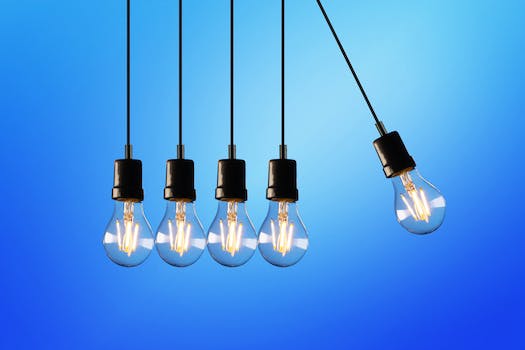-
Table of Contents
“Unlock the Secrets of Technology’s Impact on Your Sleep Patterns!”
Introduction
Sleep is an essential part of our lives, and technology has had a major impact on our sleep patterns. Technology has changed the way we interact with the world, and it has also changed the way we sleep. Technology has made it easier to stay connected and to access information, but it has also made it harder to disconnect and to get a good night’s sleep. In this article, we will explore the impact of technology on sleep patterns and discuss how technology can be used to improve sleep quality. We will also discuss the potential risks associated with technology use and how to mitigate them.
How Technology is Disrupting Our Sleep Cycles

Sleep is essential for our physical and mental health, yet technology is increasingly disrupting our sleep cycles. From the blue light emitted from our screens to the constant notifications that keep us up at night, technology is making it harder and harder to get a good night’s rest.
Blue Light
The blue light emitted from our screens is one of the biggest culprits when it comes to disrupting our sleep cycles. This light is similar to the light we experience during the day, which tricks our brains into thinking it’s still daytime. This can make it harder to fall asleep and stay asleep.
Notifications
The constant notifications we receive from our phones and other devices can also disrupt our sleep cycles. Notifications can be distracting and can keep us up at night, making it harder to get a good night’s rest.
Solutions
Fortunately, there are some solutions to help reduce the impact of technology on our sleep cycles. One of the most effective solutions is to limit your exposure to blue light in the evening. This can be done by using blue light filters on your devices or by avoiding screens for a few hours before bed.
Another solution is to turn off notifications on your devices. This will help reduce distractions and allow you to focus on getting a good night’s rest.
Finally, it’s important to create a sleep routine and stick to it. This will help your body get used to a regular sleep schedule and make it easier to fall asleep and stay asleep.
Conclusion
Technology can be a great tool, but it can also disrupt our sleep cycles. By limiting our exposure to blue light and turning off notifications, we can reduce the impact of technology on our sleep cycles and get a better night’s rest.
Exploring the Relationship Between Technology and Sleep Disorders
Sleep disorders are a growing problem in our increasingly technology-driven world. With the rise of smartphones, tablets, and other digital devices, it’s becoming increasingly difficult to disconnect from the digital world and get a good night’s sleep.
Research has shown that the blue light emitted from digital devices can disrupt our circadian rhythms, making it harder to fall asleep and stay asleep. This blue light suppresses the production of melatonin, a hormone that helps regulate our sleep-wake cycle. As a result, people who use digital devices late at night often find it difficult to fall asleep and stay asleep.
In addition to disrupting our circadian rhythms, technology can also lead to sleep deprivation. People who spend too much time on their phones or tablets may find themselves staying up late to check emails, scroll through social media, or play games. This can lead to a lack of sleep, which can have serious consequences for our physical and mental health.
Finally, technology can also lead to sleep disorders such as insomnia. People who are constantly exposed to digital devices may find it difficult to relax and unwind, making it harder to fall asleep. This can lead to chronic insomnia, which can have serious consequences for our physical and mental health.
It’s clear that technology has a significant impact on our sleep. To ensure that we get a good night’s sleep, it’s important to limit our exposure to digital devices before bedtime. We should also make sure to create a comfortable sleep environment, free from distractions such as phones and tablets. By taking these steps, we can help ensure that we get the restful sleep we need to stay healthy and productive.
Examining the Effects of Technology on Sleep Quality
Sleep is essential for our physical and mental health, yet many of us struggle to get enough of it. Technology has become an integral part of our lives, and it can have a significant impact on our sleep quality. In this blog post, we’ll explore the effects of technology on sleep quality and discuss ways to improve your sleep habits.
The blue light emitted from screens can disrupt our circadian rhythms, making it harder to fall asleep and stay asleep. This is because blue light suppresses the production of melatonin, a hormone that helps regulate our sleep-wake cycle. Additionally, the content we consume on our devices can be stimulating and keep us up at night. Whether it’s scrolling through social media, watching a movie, or playing a game, these activities can make it difficult to relax and drift off to sleep.
Fortunately, there are steps you can take to reduce the impact of technology on your sleep quality. First, limit your screen time before bed. Try to avoid using your devices for at least an hour before you plan to go to sleep. Additionally, you can adjust the settings on your devices to reduce the amount of blue light they emit. Finally, if you find yourself having trouble sleeping, try to avoid using your devices in bed.
In conclusion, technology can have a negative effect on our sleep quality. To ensure you get the rest you need, limit your screen time before bed, adjust the settings on your devices, and avoid using them in bed. With these simple steps, you can improve your sleep quality and get the rest you need.
How Technology is Changing Our Sleep Habits
Sleep is essential for our physical and mental health, yet many of us struggle to get enough of it. Technology has had a major impact on our sleep habits, both for better and for worse. In this blog post, we’ll explore how technology is changing the way we sleep.
The most obvious way technology is affecting our sleep is through the use of screens. Smartphones, tablets, and computers emit blue light, which can disrupt our circadian rhythms and make it harder to fall asleep. Additionally, the content we consume on these devices can be stimulating and keep us up at night. To combat this, many people are using apps and devices that filter out blue light or remind them to take breaks from their screens.
Another way technology is impacting our sleep is through the use of sleep tracking devices. These devices can monitor our sleep patterns and provide us with valuable insights into our sleep habits. This can help us identify any issues we may have and make changes to improve our sleep quality.
Finally, technology is also changing the way we interact with our bedrooms. Smart home devices can be used to control the temperature, lighting, and sound in our bedrooms, making them more conducive to sleep. Additionally, many people are using virtual reality and sound machines to help them relax and drift off to sleep.
Overall, technology has had a major impact on our sleep habits. While it can be disruptive, it can also be used to help us get better sleep. By using apps and devices to filter out blue light, track our sleep patterns, and create a more comfortable bedroom environment, we can use technology to improve our sleep quality.
Investigating the Impact of Technology on Sleep Deprivation
Sleep deprivation is a growing problem in our society, and technology is often blamed for its prevalence. While technology can certainly be a distraction from getting a good night’s sleep, it can also be used to help us get the rest we need. In this blog post, we’ll explore the impact of technology on sleep deprivation and how it can be used to improve our sleep habits.
First, let’s look at how technology can contribute to sleep deprivation. The blue light emitted from screens can disrupt our circadian rhythms, making it harder to fall asleep. Additionally, the content we consume on our devices can be stimulating and keep us up at night. Social media, video games, and streaming services can all be sources of distraction that prevent us from getting the rest we need.
However, technology can also be used to improve our sleep habits. Smartphones and tablets can be used to set alarms and reminders to help us stick to a consistent sleep schedule. Apps can also be used to track our sleep patterns and provide us with personalized advice on how to get better rest. Additionally, devices like smart lights can be used to reduce the amount of blue light we’re exposed to in the evening, helping us to fall asleep more easily.
In conclusion, technology can both contribute to and help us combat sleep deprivation. By being mindful of how we use our devices and taking advantage of the tools available to us, we can improve our sleep habits and get the rest we need.
Conclusion
In conclusion, technology has had a significant impact on sleep patterns. Technology has made it easier to stay connected and entertained, but it has also made it more difficult to disconnect and get a good night’s sleep. Technology has also been linked to sleep disorders, such as insomnia, and can disrupt the body’s natural circadian rhythm. While technology can be beneficial in many ways, it is important to be mindful of how it affects our sleep patterns and to take steps to ensure that we are getting enough restful sleep.















